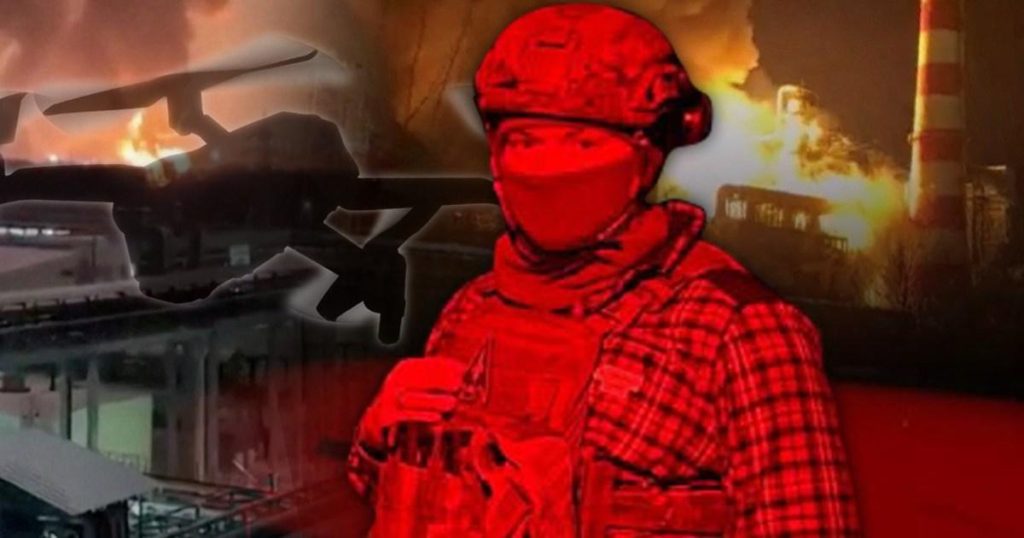Paragraph 1: The Rise of Ukrainian Drone Warfare
Ukraine’s military has embraced unmanned aerial vehicles (UAVs), commonly known as drones, as a crucial element in its defense strategy against Russia. The 14th Separate UAV Regiment, a highly advanced unit within the Ukrainian Armed Forces, exemplifies this shift. This regiment stands out as the only military unit globally operating nearly every type of UAV, pioneering a "new chapter" in warfare. Their operations extend far beyond the front lines, striking deep within Russian territory, targeting oil bases, ammunition depots, and other military infrastructure. These long-range attacks demonstrate Ukraine’s commitment to disrupting Russia’s war effort and degrading its military capabilities. One operator, known only as ‘Ukie,’ embodies this new era, specializing in piloting long-range attack drones like the ‘Lutyi,’ meaning ‘Fierce.’
Paragraph 2: Illustrating the Impact of Ukrainian Drone Strikes
Ukrainian drone operators have carried out a series of impactful strikes deep inside Russia. Targets have included the Aleksinsky chemical plant in the Tula Region, over 1,000km from the border, where plumes of orange smoke were witnessed following a drone attack. A large ammunition warehouse in Toropets, located within Russia, was reportedly obliterated by a Ukrainian drone strike. The Engels Air Base, a critical hub for Russian strategic bombers, has been repeatedly targeted, including an attack that damaged two Tu-95 Bear heavy bombers. One of the most dramatic strikes hit the Krisal oil refinery, causing a massive fire that burned for five days. These examples underscore the reach and effectiveness of Ukrainian drone operations in disrupting Russian military capabilities and logistics.
Paragraph 3: Escalation of Drone Warfare and Key Strikes
Ukraine’s drone warfare campaign has escalated over time, with an increasing number of long-range attacks targeting critical infrastructure within Russia. A timeline of key strikes reveals the evolving nature of this conflict. From the August 2022 attack on the Saky airbase in Crimea to the multi-region blitz in January 2025 targeting military-industrial facilities, including the Engels air base, Ukraine has demonstrated its growing capacity to conduct sophisticated and impactful drone operations. The repeated targeting of the Steel Horse oil facility, a key supplier to the Russian armed forces, highlights Ukraine’s strategic targeting of Russia’s military logistical networks. These escalating attacks underscore Ukraine’s commitment to using drones as a key tool in its defense strategy.
Paragraph 4: Public-Military Collaboration and Innovation
The Come Back Alive Foundation, a Ukrainian charity supporting the military, plays a crucial role in this evolving drone warfare landscape. The organization provides crucial equipment and training, including all-terrain vehicles and high-tech kits, enabling the military to carry out these complex operations. One notable initiative is the "Black Box" project, a secretive program that funded sabotage missions behind enemy lines, highlighting the innovative approaches being utilized. The foundation also spearheads the "Dronefall" project, aiming to neutralize Russian reconnaissance drones using upgraded first-person view drones. This public-military collaboration demonstrates the crucial role of public support and innovation in enabling Ukraine’s drone warfare efforts.
Paragraph 5: Assessing the Impact and Significance of Ukrainian Drone Warfare
The effectiveness of these long-range drone strikes has been significant in disrupting Russian military operations. According to the Come Back Alive Foundation, the "Black Box" project, funded through public donations, inflicted over $900 million in damage to Russian forces in just eight months. The ‘Bober’ kamikaze drones, supported by this project, have successfully targeted critical military-industrial facilities, further disrupting Russia’s production and supply chains. The "Dronefall" project also boasts significant success, neutralizing over 400 Russian UAVs, thereby limiting their intelligence-gathering capabilities. These achievements underscore the impact of public support and the strategic importance of drone warfare in Ukraine’s defense strategy.
Paragraph 6: International Collaboration and the Future of Drone Warfare
International collaboration plays a vital role in supporting Ukraine’s drone warfare efforts. A European coalition, co-led by Britain and Latvia, provides significant assistance, including the recent pledge to send 30,000 drones to Ukraine with funding from multiple countries. Ukraine’s establishment of the Unmanned Systems Forces further underscores the institutionalization of drones within its military structure. Experts at the Atlantic Council emphasize the potential of drones to significantly impact the conflict when deployed effectively and in sufficient numbers. The ongoing development and deployment of drones by Ukraine, combined with international support, signals a continued reliance on and evolution of this technology in the ongoing conflict. This new era of warfare underscores the growing importance of UAVs in modern military strategy and the dynamic adaptation of technology in armed conflict.


